Cloud Technology
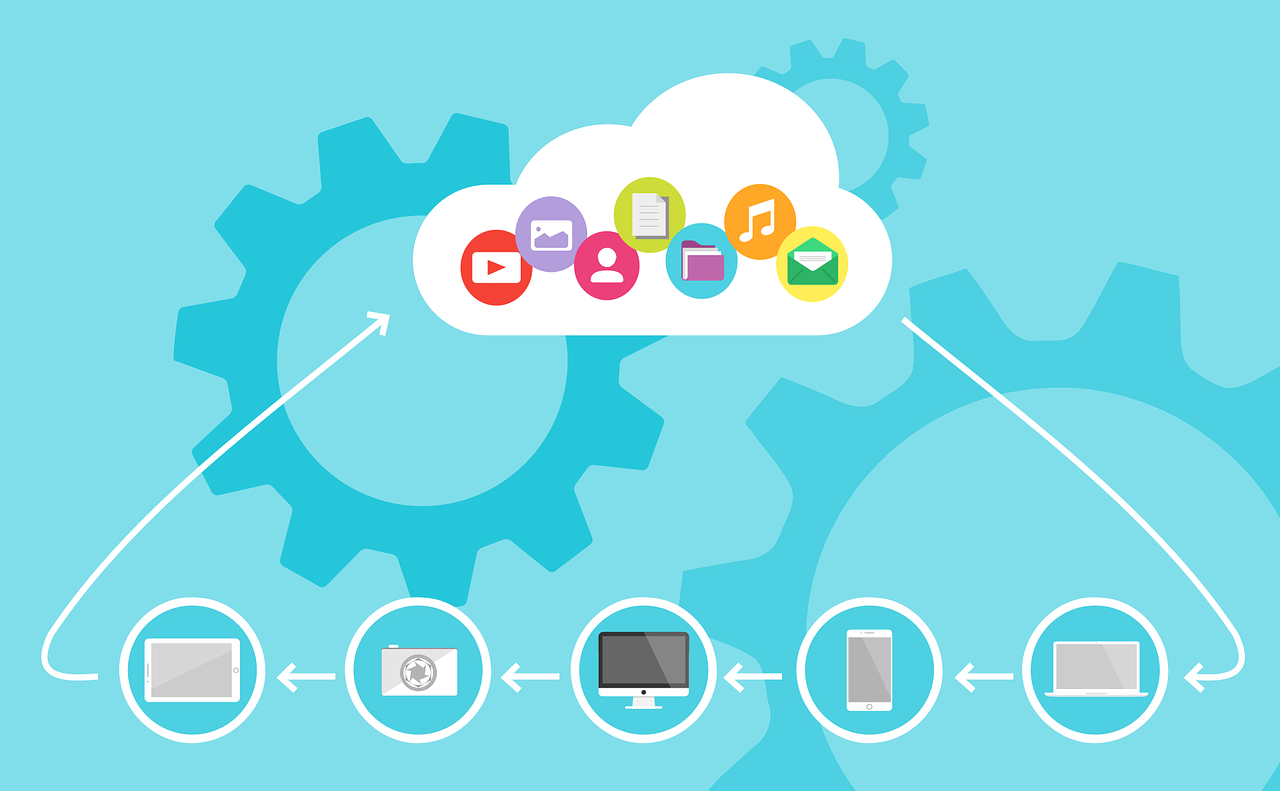
What is Cloud? Why it is needed?¶
Cloud computing (sometimes called the cloud) is the practice of using a network of remote servers hosted on the internet to store, manage, and process data, rather than a local server or a personal computer. Cloud refers to a virtual space where you store or retrieve data over the internet. Virtual space is nothing but data centers installed, maintained, and supervised by cloud providers.
Cloud computing provides on-demand delivery of IT resources over the internet. Now, instead of buying, owning, and maintaining physical data centers and servers, you can access technology services, such as computing power, storage, and databases from a cloud provider.
What are the advantages of cloud computing?¶
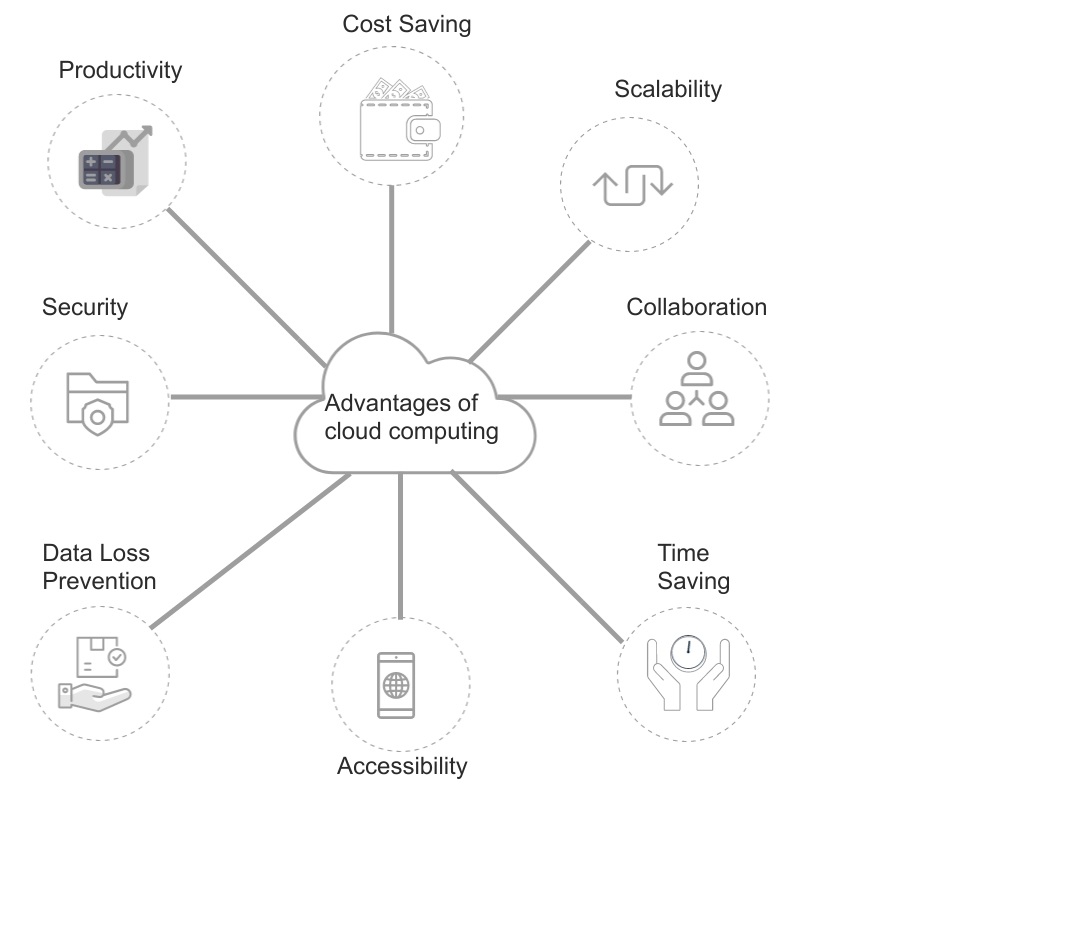
Cloud computing has many advantages for existing business model growth. They are:
-
Accessibility: Applications built on the cloud can be accessed from anywhere with an internet connection.
-
Scalability: You can always scale up or scale down the number of resources required as and when required.
-
Productivity: From development to implementation is easy with the cloud. You can launch your website with the click of a button on the cloud without worrying about server requirements and all.
-
Cost Saving: With the cloud, you don’t have to worry about buying a server and its maintenance as well as the payment method is based on a subscription model. That means you pay only for the services you use.
-
Time-saving: No need to update the software on the cloud. It gets automatically updated and thus saves a lot of time as you don’t have to download updates, install and restart your computer.
-
Collaboration: Collaboration over the cloud is easy as a collaborator can access the service using their login credentials for the same application.
-
Data Loss Prevention: All your data is saved on the cloud. Storing and retrieving the data over the cloud is easy.
-
Security: The security of data, as well as the servers, is the responsibility of the cloud providers.
Who are the cloud providers?¶
A cloud provider or cloud vendor- is a company that provides cloud computing-based services and solutions to businesses and/or individuals. These services may vary from rented to provider-managed virtual hardware, software, infrastructure, and others. Different cloud providers in the market are:
-
Microsoft Azure
-
Amazon Web Services
-
Google Cloud Platform
-
Oracle Cloud
-
Rackspace Technology
-
VMware
-
IBM Cloud
-
Alibaba Cloud
What are the different types of services provided by cloud providers?¶
The services cloud providers offers has been divided into three types:
Let us discuss these services first by comparing it with the pizza as a service analogy.
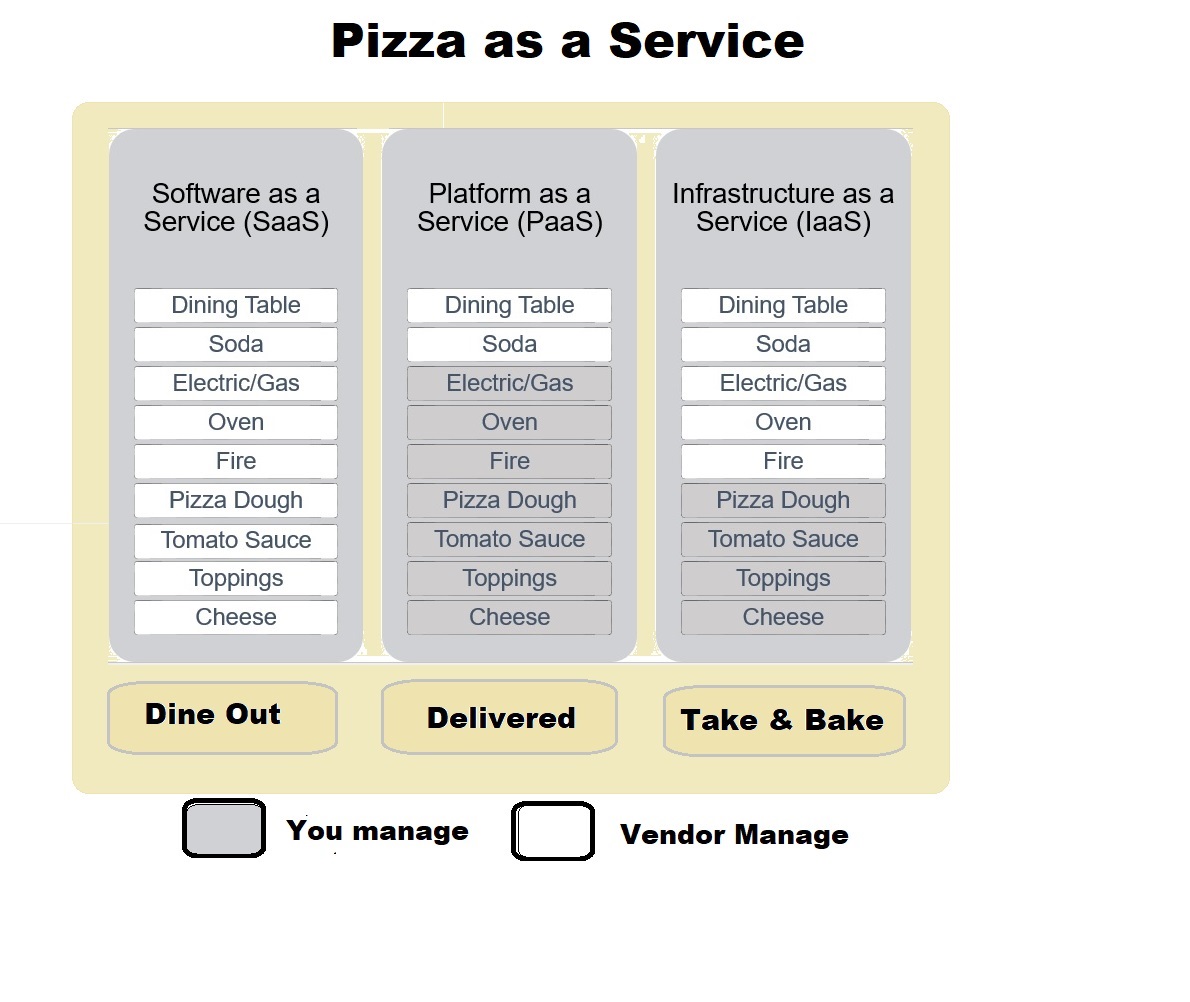
As you can observe in the SaaS of Pizza model, while dining out, you don’t care about the materials required to make pizza or how it is baked. You go to a restaurant and order one pizza.
PaaS of Pizza model is similar to the pizza delivery at your doorstep. You simply pay for the delivery and order but simply do not have to worry about how they managed to make and bake it for you. All you have to do is an arrangement of the dining table and drinks you want to enjoy.
IaaS of Pizza model, says take these required ingredients to make pizza from the shop, now you have to manage the gas, stove, dining, and soda. This implies that the required elements for making pizza will be made available to you, you have to bake it the way you want.
Let us jump into the real meanings of these services:
SaaS (Software As a Service)¶
Similarly, the cloud provider provides applications or software which are owned by them to their customers. The customers need not worry about available infrastructure and resources. The customer can directly access this software’s from any device which is connected to the internet using their login credentials. The cloud provider charges a monthly or yearly basis for the use of software or application.
For Example, Google Workspace, Dropbox, Salesforce, Cisco WebEx, Concur, GoToMeeting, Zoom, O365.

PaaS (Platform as a Service)¶
In this service, the cloud provider provides the customer with the environment (frameworks and tools) required to build or run applications and software. The cloud provider manages or handles operating systems, storage, and servers required by customers to run their applications.
For example AWS Elastic Beanstalk, Windows Azure, Heroku, Force.com, Google App Engine, Apache Stratos, OpenShift.
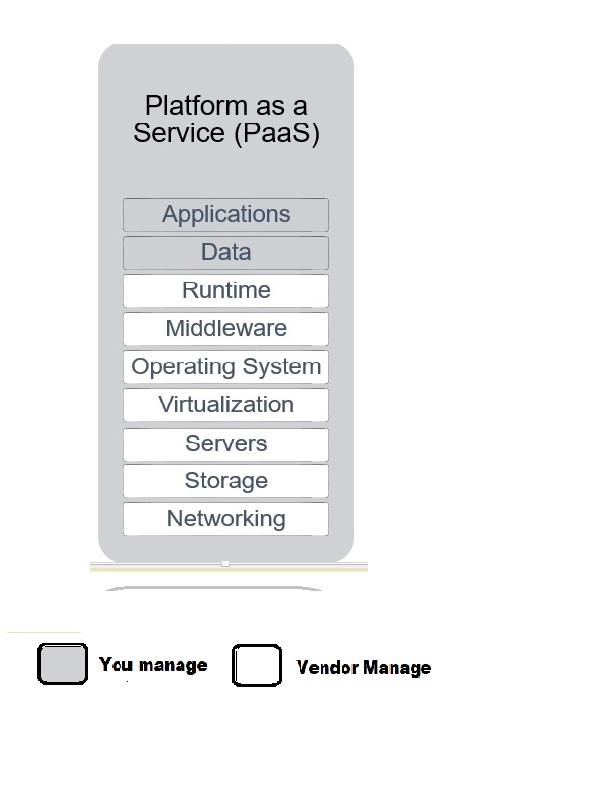
IaaS (Infrastructure as a Service)¶
In this service, the cloud provider provides the infrastructure and resources required by the customer. The cloud providers take care of installation and maintenance. The customer can use various technology services, such as computing power, storage, and networking provided by cloud providers to run their applications. They have to maintain which operating system, middleware should be used.
For example, DigitalOcean, Linode, Rackspace, Amazon Web Services (AWS), Cisco Metapod, Microsoft Azure, Google Compute Engine (GCE)
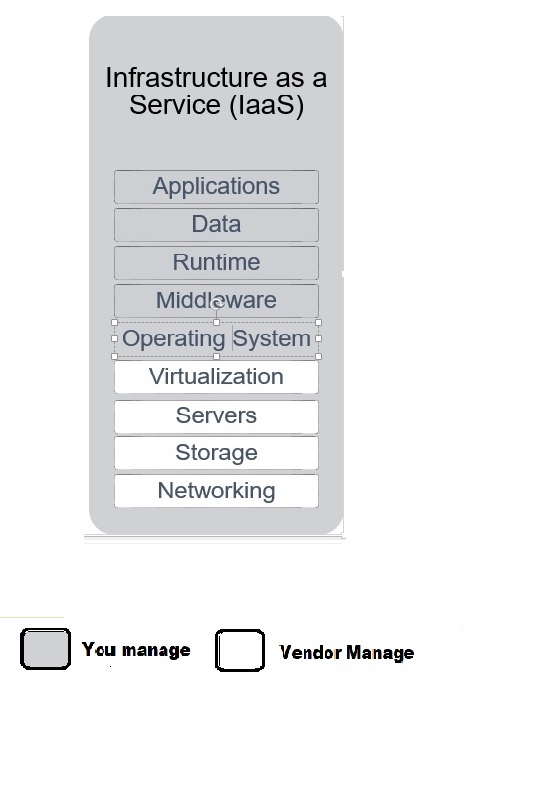
How do you deploy cloud computing?¶
Depending upon where the infrastructure for the deployment resides and who has control over that infrastructure, cloud deployment model is divided into three categories:
Private Cloud¶
It is the infrastructure (hardware and servers) on which cloud computing is for a single organization’s use. It is maintained by the organization itself or cloud providers. Many organizations deploy some of their resources on the private cloud for additional security and privacy concerns.
For example, medical and banking institutions stores their highly sensitive data on a private cloud.
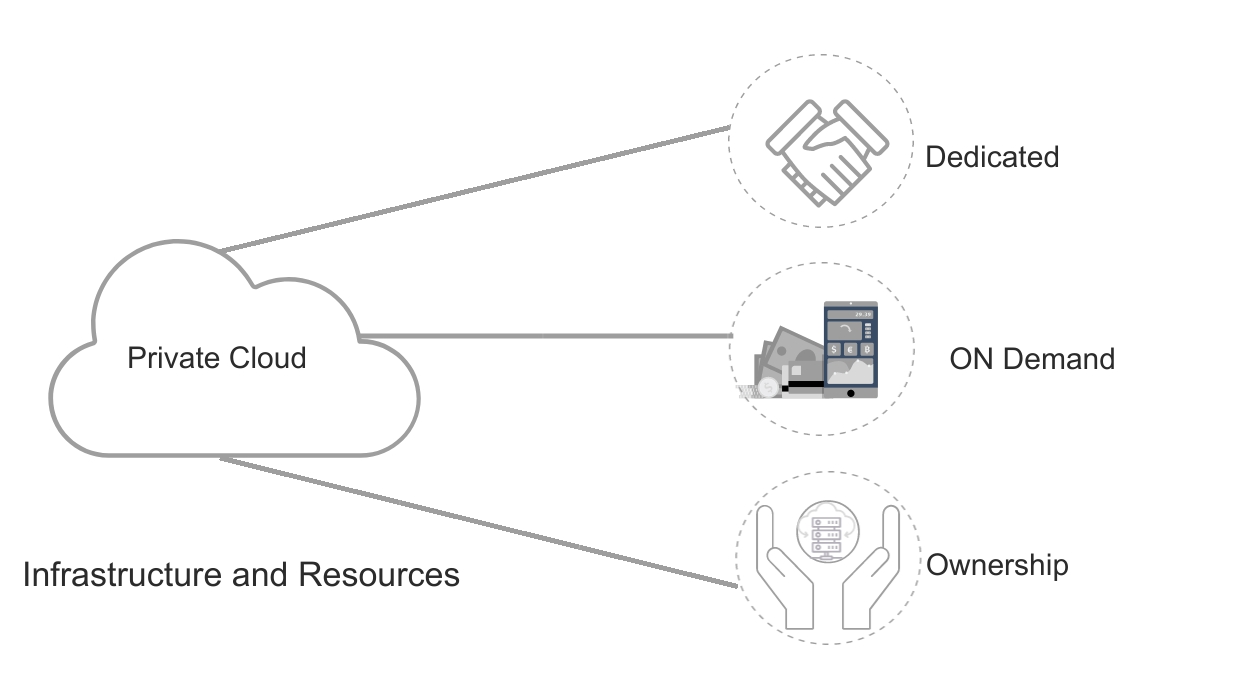
Public Cloud¶
In this type of cloud deployment model, you can use cloud services(hardware or software) installed on cloud providers’ premises via the internet. Companies that don’t want to manage data centers and servers can access these shared computing resources and infrastructure on-demand, via the internet. They can quickly adjust how much they need and pay as they go only for what they use.
For example, Google services like Gmail, google drive are available to the public to use through the internet.

Hybrid Cloud¶
It uses both private and public clouds. In a hybrid cloud, an organization makes use of interconnected private and public cloud infrastructure. The organization uses the private cloud to run critical and sensitive operations and the public cloud to run customer-oriented operations.
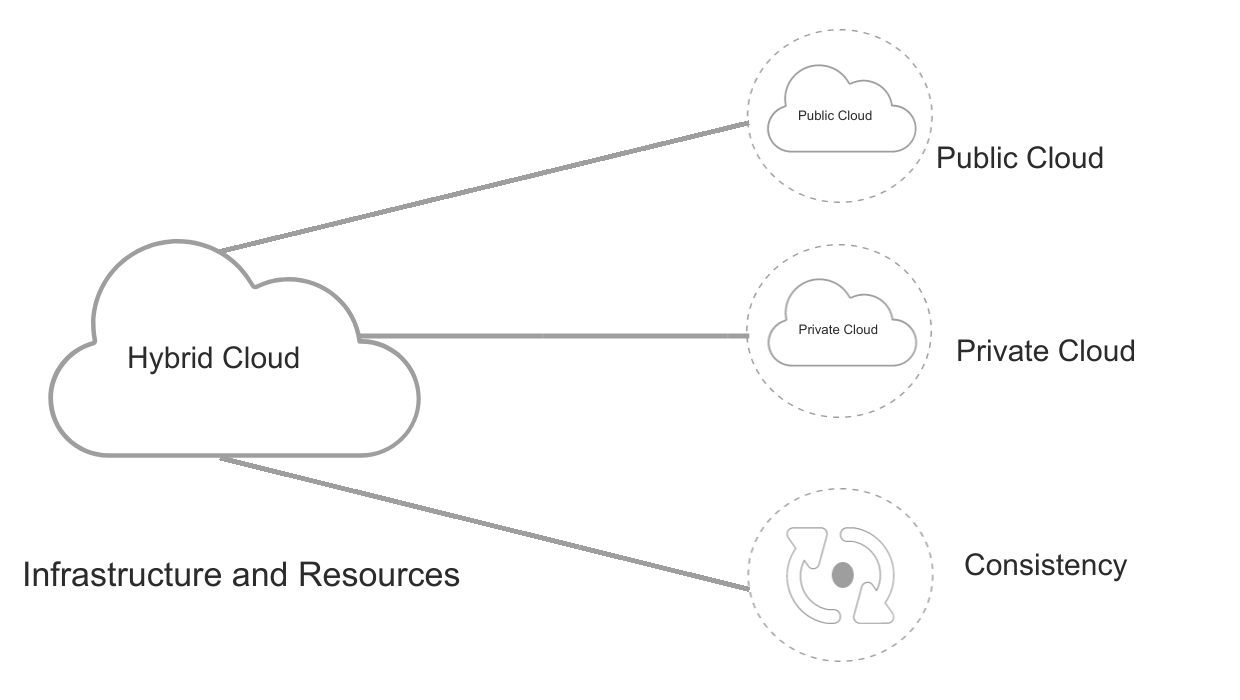
Community Cloud¶
A community cloud is a cloud infrastructure that allows system and services to be accessible by a group of several organizations. Here the organizations shares policies and protocols with each other. It falls between the category of private and public cloud. Community cloud is cost-effective. It is more secure than public cloud but less than private cloud.
For example, Google has ‘Gov Cloud’ and NASA has ‘Nebula Cloud’.
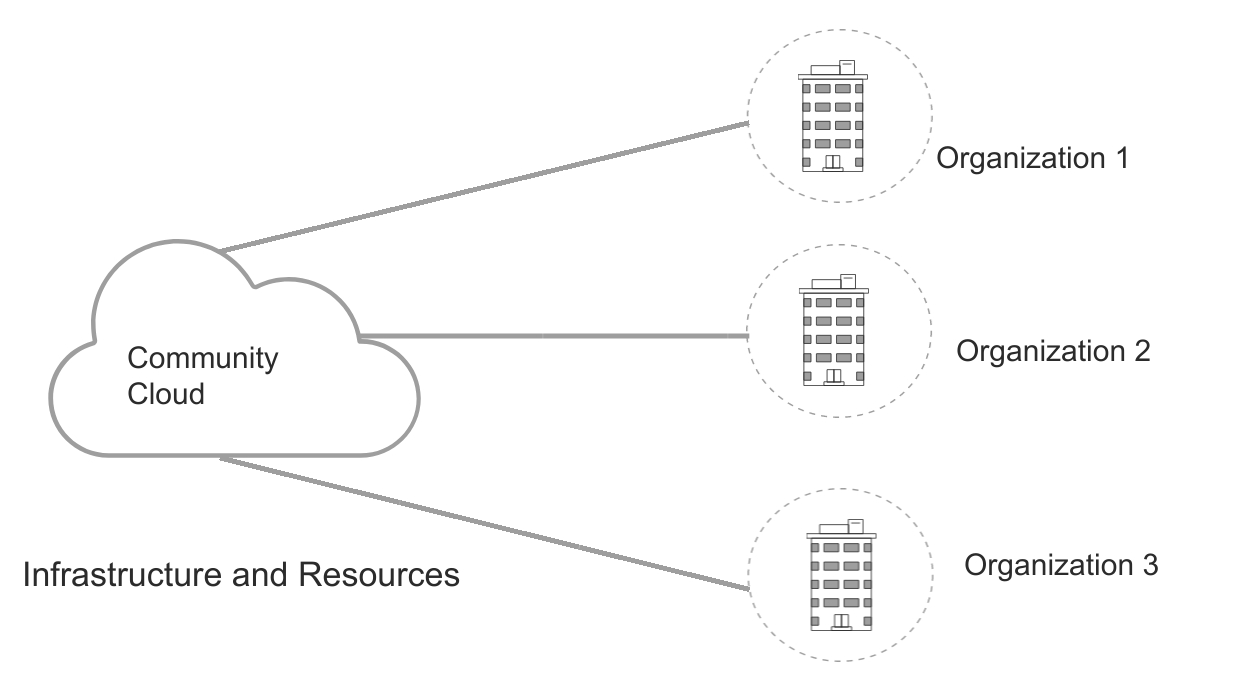
Difference between the three deployment model can also be understood from the following table:
| Private Cloud | Public Cloud | Hybrid Cloud |
|---|---|---|
| The cloud infrastructure is owned and managed by a single organization. | The cloud computing resources are shared across multiple organizations. | A flexible infrastructure is created using the best of both the worlds- private and public. |
| The computing resources remain behind organizations firewalls. | The infrastructure is managed by a third party service provider. | Provides a mixed- service environment. |
| Huge capital and operating expenses are involved. | The more services you use, the more you pay. | It is a cost effective IT infrastructure that benefits from both public and private clouds. |
| It is highly secure as resources are not shared with others. | Security elements are provided by third party service providers. | Sensitive data and assets are stored in a secure private cloud. |